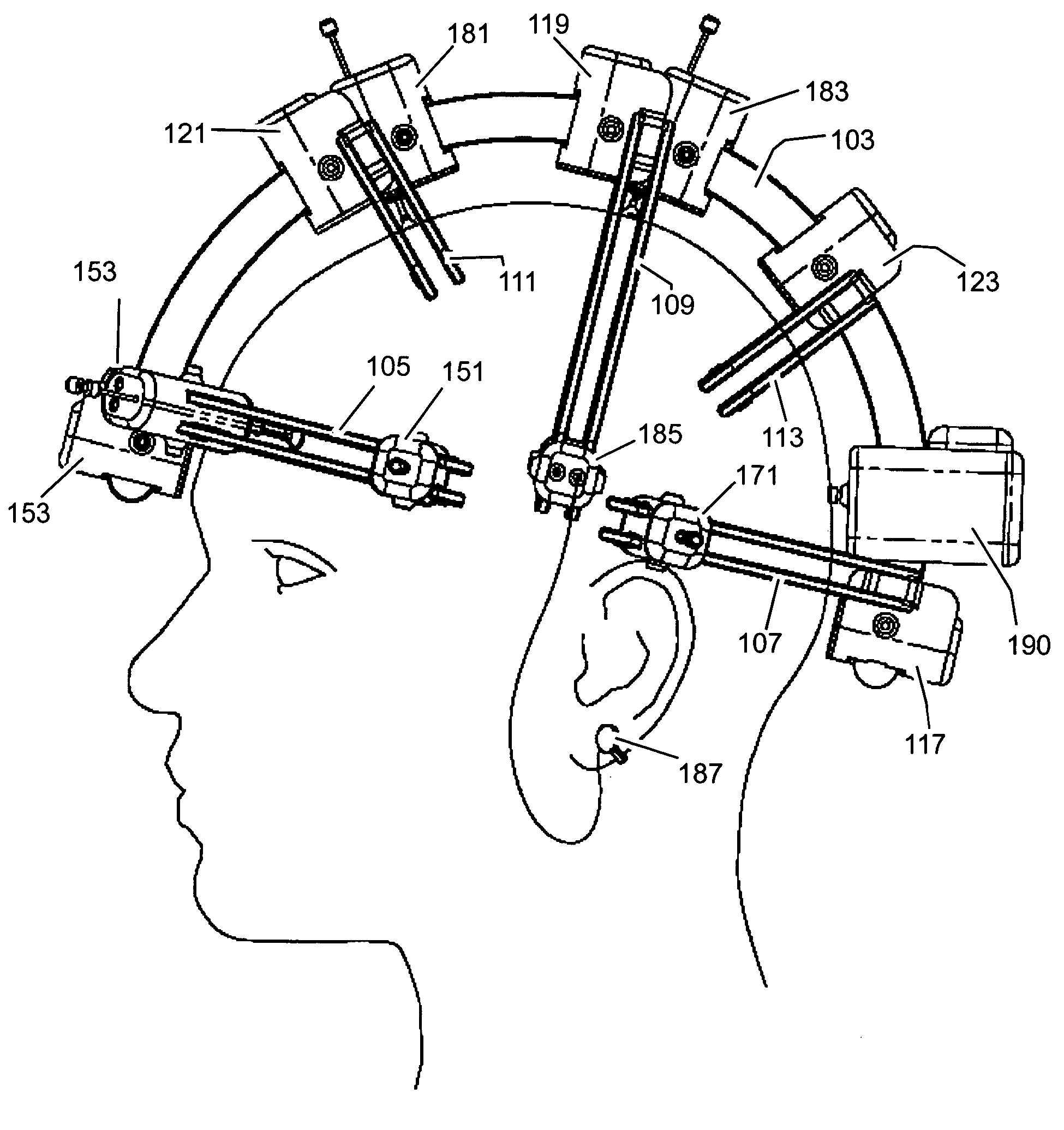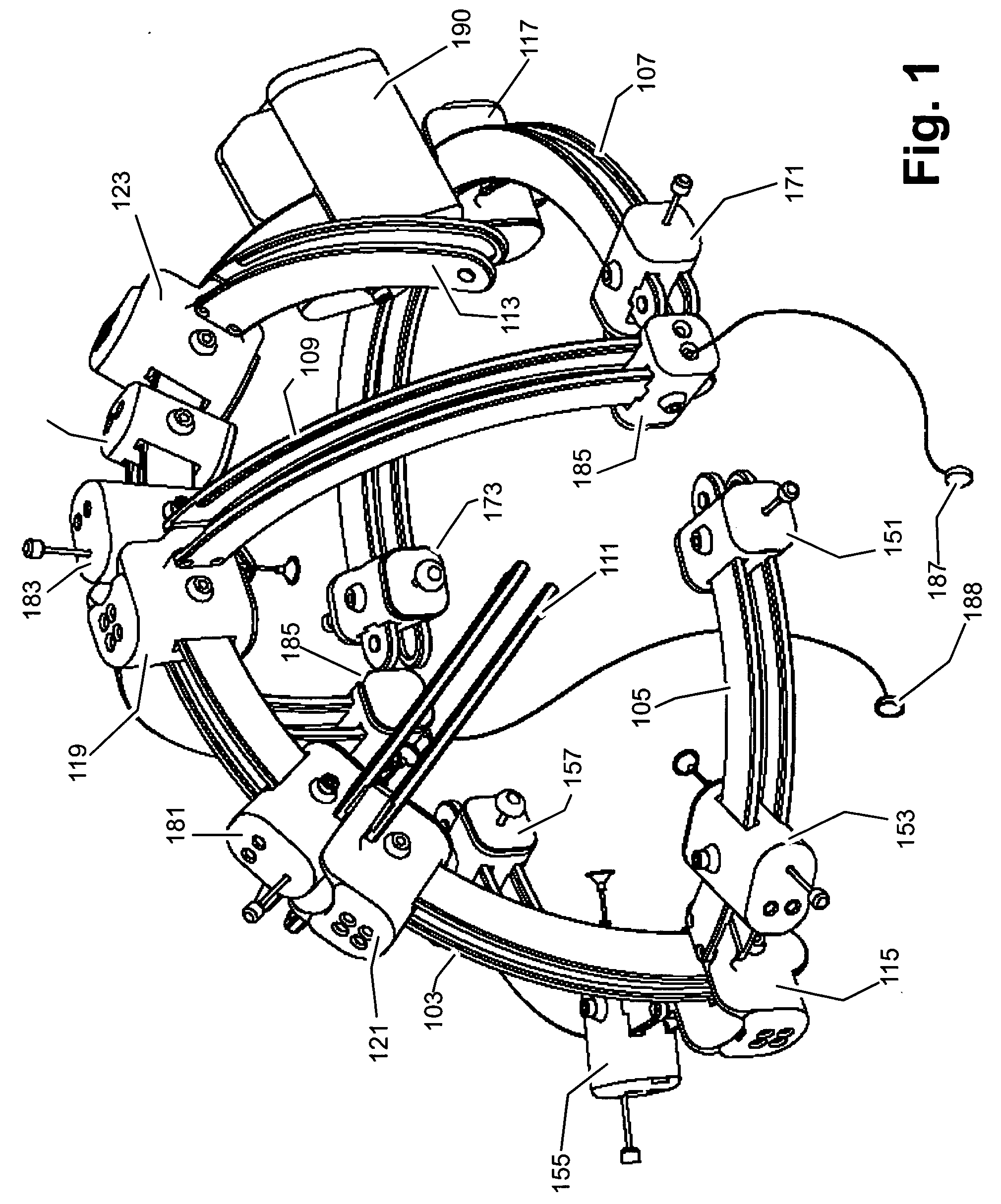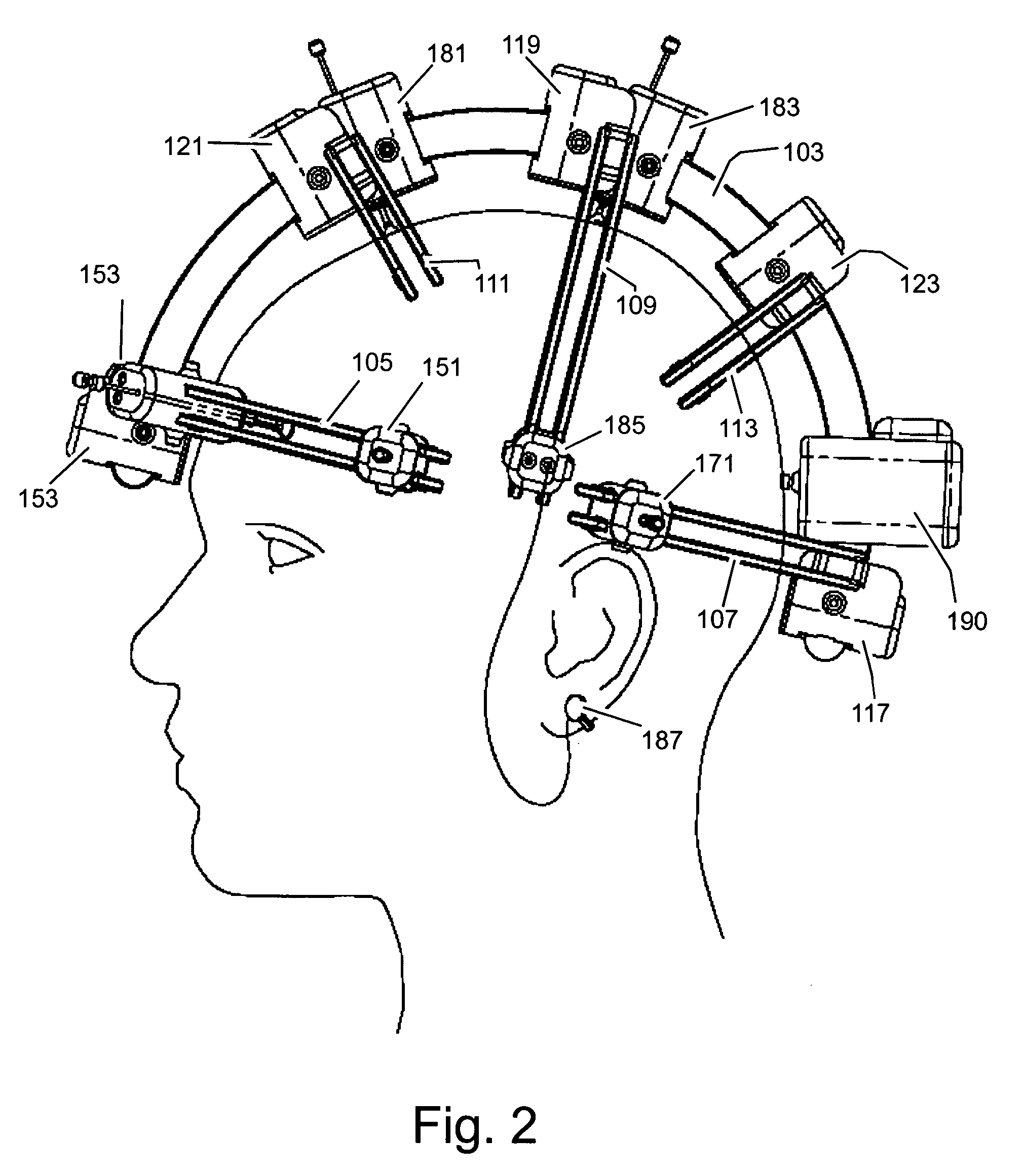Methods and apparatus for positioning and retrieving information from a plurality of brain activity sensors
a brain activity sensor and positioning technology, applied in the field of brain activity sensor positioning and retrieval information from a plurality of brain activity sensors, can solve the problems of disturbing the electrode connection, eeg recording has proven to be more problematic, and the multiple secure electrode connection to the patient's skin is not maintained, so as to facilitate the biopotential contact sensor and facilitate the effect of good conta
- Summary
- Abstract
- Description
- Claims
- Application Information
AI Technical Summary
Benefits of technology
Problems solved by technology
Method used
Image
Examples
Embodiment Construction
[0031] The preferred embodiment of the invention is a self-contained, modular, wireless, head-mounted brain activity sensing system suitable for clinical, research, and interface applications. The invention can be used to advantage for the acquisition of brain imaging and sensing data. The preferred embodiment of the invention consists of a modular mechanical frame which houses a power and communications bus to which a plurality of sensors and other devices can be attached. The sensors are designed for brain signal acquisition and other sensing tasks. A host controller residing on the same bus coordinates the signal acquisition and outputs the data to a wireless link for remote processing.
[0032] The system is made up of a collection of functional blocks, each of which implements a subset of the overall system functionality. As used herein, the term “node” refers to a functional component that has a mechanical housing and may interface with the system over the power and communicatio...
PUM
 Login to View More
Login to View More Abstract
Description
Claims
Application Information
 Login to View More
Login to View More - R&D
- Intellectual Property
- Life Sciences
- Materials
- Tech Scout
- Unparalleled Data Quality
- Higher Quality Content
- 60% Fewer Hallucinations
Browse by: Latest US Patents, China's latest patents, Technical Efficacy Thesaurus, Application Domain, Technology Topic, Popular Technical Reports.
© 2025 PatSnap. All rights reserved.Legal|Privacy policy|Modern Slavery Act Transparency Statement|Sitemap|About US| Contact US: help@patsnap.com



